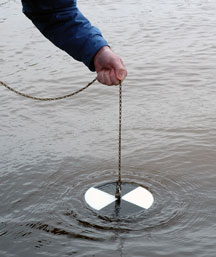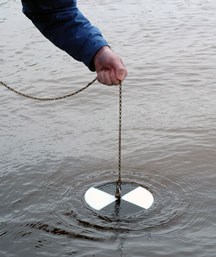
Often marine scientists as well as fisherman want to test the murkiness (or turbidity) of the water. How can you do this quickly and accurately? Well, first you’ll need a Secchi Disk. With the cheap, easy-to-make Secchi Disk you can test water quality like a pro!

